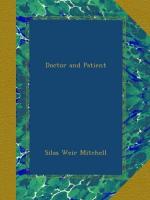The ductility of childhood has its dangerous side. This is seen very well in cases which, fortunately, are rather rare, and, for some reason, are less frequent in girls than in boys. These little ones observe sharply the faces and obvious motives of those about their sick-beds, and more readily than adults are led to humor the doubts they hear expressed by the doctor or their elders as to their capacity to do this or that. Too frequent queries as to their feelings are perilously suggestive, and out of it all arises, in children of nervous or imaginative temperaments, an inexplicable tendency to fulfil the predictions they have heard, or actively to humor the ideas they acquire as to their own ailments and disabilities.
There is something profoundly human in this. With careless, unthoughtful people, who have trained a child to know that illness means absolute indulgence, and who pour out unguardedly their own fears and expectations at the bedside, the result for the child is in some cases past belief. The little one gets worse and worse. It accepts automatically the situation, with all the bribes to do so made larger by feebleness, and at last gains that extreme belief in its own inability to rise or move about which absolute convictions of this nature impose on child or man.
There is a further and worse stage possible. The child’s claims increase. Its complaints gather force, and alarm those about it. Gratified in all its whims, it develops perverted tastes, or refuses all food but what it fancies. At last it becomes violent if opposed, and rules at will a scared circle of over-affectionate relatives. When all else fails, it exaggerates or invents symptoms, and so goes on, until some resolute physician sees the truth and opens the eyes of an amazed family.
Certain physicians explain these cases as due to hysteria, and in a small number of instances there are signs which justify such an explanation. But in the larger proportion the mode of origin is complex, and depends on the coincidence of a variety of evils, none of which are of hysterical character. I am not here concerned so much with the exact nature of these troubles as I am with the avoidable errors in the management of sick childhood. If I can make the mother more thoughtfully alert, less disposed to terror and exaggeration, less liable to be led by her emotions, I shall have fulfilled my purpose without such discussion as is out of place in essays like these.
To make clear, however, the possibility of the disasters I have briefly described, an illustration may answer better than any length of generalized statements. A little fellow of nine once came under my care, and was said to have inflammation of the coverings of the brain. There was a long story, which I may sum up in a few sentences. An only child; feeble in youth; indulgence to almost any degree; at the age of eight, a fall, not at all grave, but followed by some days of headache; long rest in bed, by order




